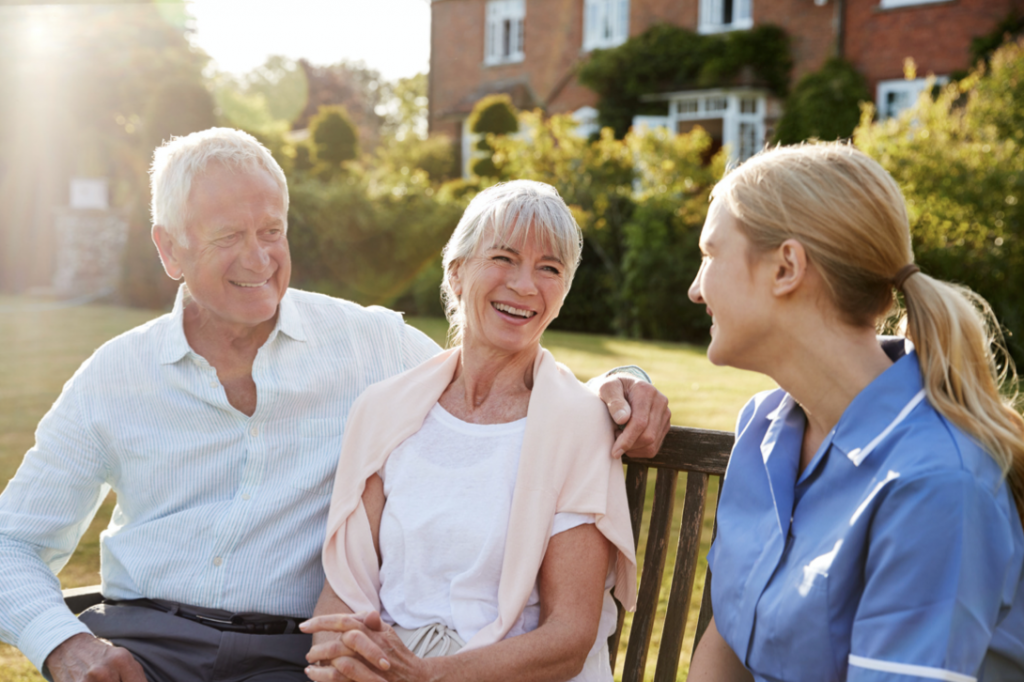We know how important visits are for supporting the health and wellbeing of people living in care homes and their relationships with friends and family.
We’re encouraging and supporting care homes in Sheffield to provide safe visiting opportunities.
When you can visit
It is up to the care home provider to decide if, when and how you can visit. They will only be able to welcome a certain number of visitors every day as visitors need to socially distance and take tests.
Care homes must involve you, the family member or friend you’d like to visit, and any other relevant professionals in all decisions about visiting arrangements. Where appropriate, care homes can share the risk assessments underpinning visiting policies with residents or their families to help explain the decisions they have made and their visiting policy. You should discuss individual visiting arrangements with your care home.
Who can visit?
Named visitor’s scheme.
From 17 May 2021 care home residents can nominate up to 5 visitors for regular indoor visits. No more than 2 visitors can visit at the same time and a maximum of 2 visitors per day can visit (essential care givers are exempt from this daily limit).
Families and residents should discuss this and agree who will be nominated. If the resident lacks the capacity to make this decision, the care home is encouraged to discuss this with the resident’s family, friends and others who may usually have visited the resident.
A person can only be nominated if this has been determined to be in the resident’s best interests in accordance with the empowering framework of the Mental Capacity Act. If necessary, social workers can be approached by the care home, resident or family to support these conversations to help resolve any issues and ensure professional support or oversight.
Named visitors:
- should preferably be the same people for each visit.
- must return a negative lateral flow test (LFT) taken on the day of the visit. This can be taken at the care home before being admitted. Visitors may be able to provide evidence of a test taken elsewhere. However, this should be agreed with the care home manager prior to your visit.
- should wear appropriate personal protective equipment (PPE) including a surgical mask for the duration of the visit.
- should avoid close contact (they may be able to hold hands through gloves but will be asked to avoid any closer contact)
The resident can meet with both of their named visitors at the same time (if the care home can accommodate this) or meet with them separately if they prefer. If the resident has a named caregiver, they may also take part in the visits if agreed with the care home manager.
The resident can meet with up to 2 named visitors at the same time (if the care home can accommodate this) or meet with them separately if they prefer. If the resident has a named caregiver, they may also take part in the visits if agreed with the care home manager.
Visits involving children and young people aged under 18.
Children aged under 18 can be one of the 5 nominated visitors if the resident, family and care home agree that is appropriate.
Any visits involving children should be carefully considered by the family. The arrangements for the visit, in particular the numbers involved and where the visit will take place, must be planned and agreed with the care home in advance.
They must be able to follow infection prevention control measures carefully, including social distancing, PPE use (where appropriate) and advice on minimising physical contact. They must be able to follow instructions or advice from care home staff.
Any children visiting (apart from babies and children under the age of 2) should be counted towards the maximum number of people allowed for a visit. Visits including babies and children under the age of 2 may take place with the agreement of the care home manager (these children do not need to be counted as an additional visitor).
Essential family carer
People with highest care needs may be able to nominate an ‘essential family carer’, families should discuss and make agreements with care homes. Some residents need more support and may need a particular trusted person to perform some personal care tasks and enable the person to eat and drink well. Without this support, their health may be in danger of deteriorating very rapidly.
In this situation, the government will provide extra support to those visitors, whose visit is essential to the resident’s immediate health and wellbeing. With the agreement of the care home, these visitors will have access to the same testing and PPE as care home staff.
Existing visiting arrangements
Care homes can continue to allow visits for other loved ones through their existing arrangements such as substantial screens, visiting pods, visits behind windows or outdoor visiting.
How care homes should decide on visits.
Care homes must:
- take all steps possible to enable safe, regular visiting opportunities.
- make decisions about visiting on an individual basis. Blanket bans on visiting are not allowed.
- work with individual residents, their family and friends, and local professionals to find the right balance between the benefits of visits to people’s wellbeing and the risk of transmission of COVID-19.
- complete an individual risk assessment and visiting or contact plan with every resident.
- consider the rights of residents who may lack the relevant mental capacity needed to make particular decisions (e.g. deciding on who their single named visitor will be) and, where appropriate, consult their advocates or those with power of attorney. For example, some people with dementia and learning disabilities may lack the relevant capacity to consent to a provider’s visiting arrangements. These residents will fall under the empowering framework of the Mental Capacity Act 2005 (MCA) and are protected by its safeguards.
- always allow visits in exceptional circumstances such as end of life, extreme distress or depression
- make visits as COVID-19 secure as possible.
- pause visiting arrangements (except in exceptional circumstances such as end of life, extreme distress or depression) in the event of a COVID-19 outbreak in the home. If visiting is paused, care homes must keep residents, family and friends informed, and maintain alternative means of contact between residents and their loved ones such as phone and video calls.
Shielding residents
In line with the government’s COVID-19 Response – Spring 2021 roadmap published last month, those on the shielded patient list can begin to follow the national restrictions alongside the rest of the population. They are still advised to take extra precautions to keep themselves safe from COVID-19. Letters with updated guidance have been sent to those on the Shielding patient list.
As long as visiting is delivered in line with national guidance, this will provide an appropriate level of risk mitigation and management. Individualised risk assessments should be completed for residents where necessary. This includes specific vulnerabilities as set out in the resident’s care plan. This may mean that some individuals should sensibly take a different approach to visiting than others. This would be on the basis of individual clinical advice.

